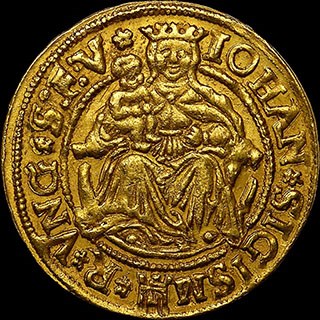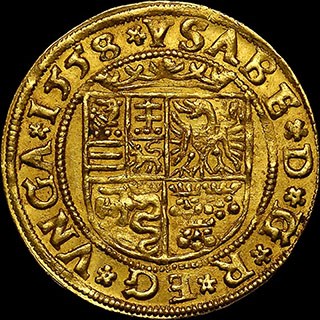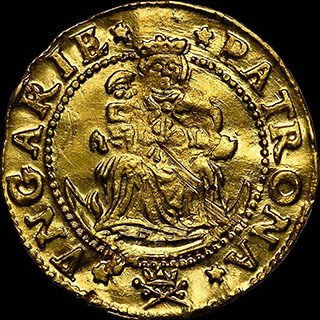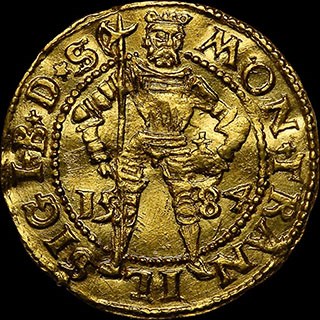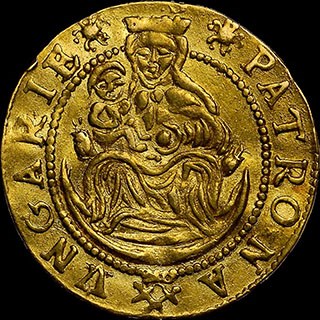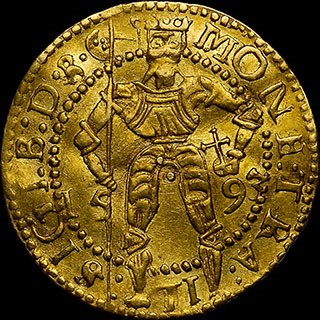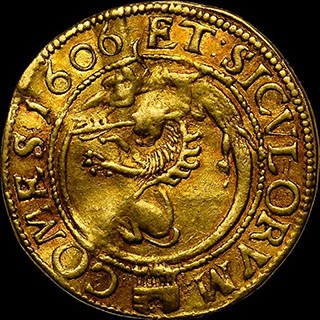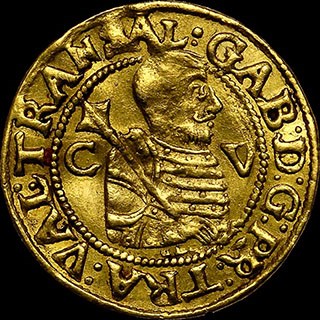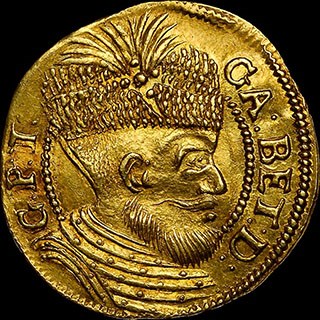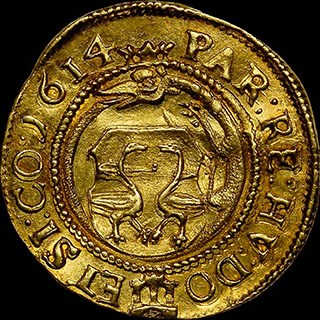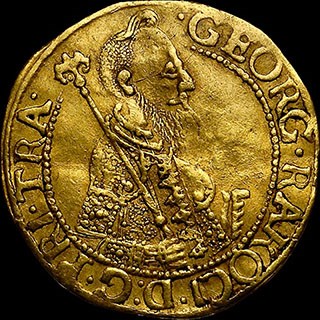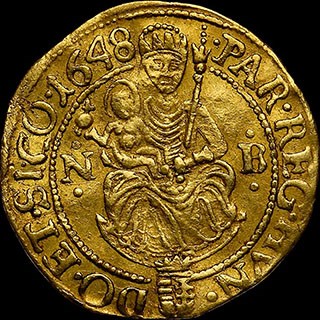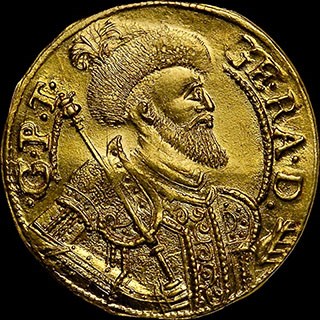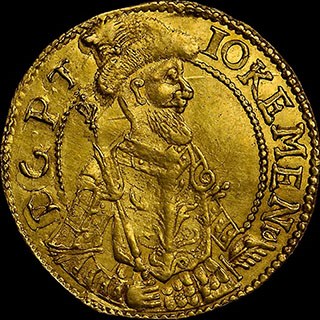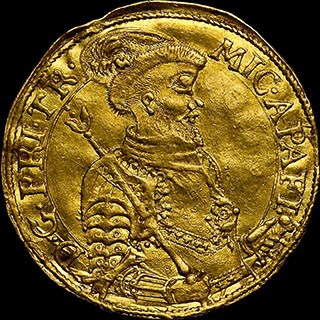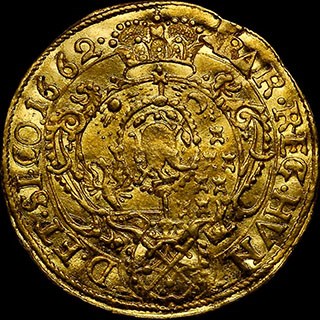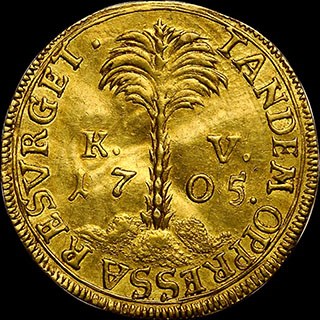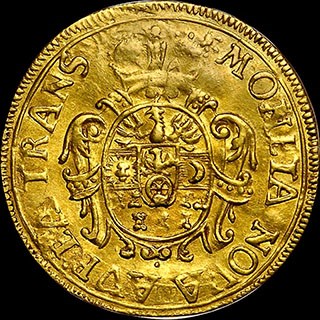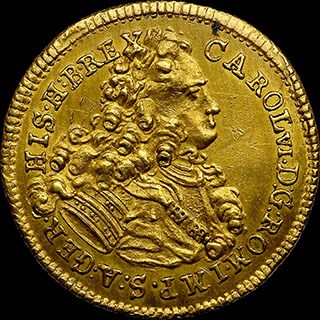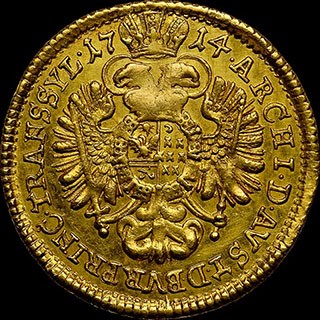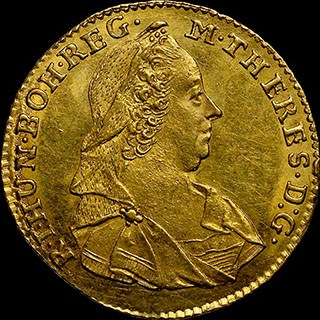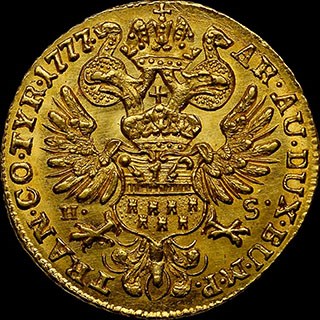History Through Coins: Transylvania
Posted on 08/10/2019
With Halloween approaching, this is the time of year most closely associated with the eastern European region of Transylvania. Located within modern-day Romania, Transylvania became linked with vampires thanks to Irish author Bram Stoker’s 1897 horror novel Dracula. The novel based its title character on Vlad Dracula (also known as Vlad the Impaler), a Machiavellian ruler in the region in the 1400s known for his brutality.
A 2018 Irish Proof Silver 15 Euro, pictured here, pays tribute to Stoker's enduring contribution to the world of literature. A depiction of Vlad the Impaler appears on a 2009 Proof Bronze 1 Leu from Romania.
 |
 |
| 2018 Ireland Proof Silver 15 Euro featuring Bram Stoker's Dracula, based on Vlad the Impaler (left); 2009 Romania Proof Bronze 1 Leu featuring Vlad the Impaler (right) Click images to enlarge. |
|
Vlad the Impaler issued no coins of his own during his three reigns as leader of Wallachia (1448, 1456-1462 and 1476), a region in modern-day Romania that is actually just south of Transylvania. It was, however, his cruelty to the Saxons in Transylvania that helped immortalize him in contemporary stories as a drinker of blood. Stoker’s novel permanently linked Dracula to Transylvania, which became a principality in 1570, almost a century after the death of Vlad the Impaler.
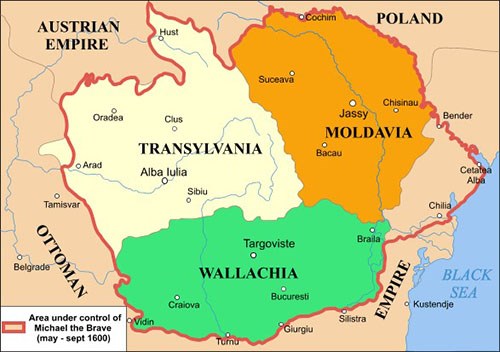 |
|
| Wallachia and Transylvania are in modern-day Romania, in southeastern Europe. Click image to enlarge. |
|
During the lifetime of Vlad the Impaler, the Ottoman Empire held vast swaths of land in the Balkans and Turkey, and it consolidated control over the region by conquering Constantinople in 1453. At this time and during the two centuries that followed, the growing Ottoman Empire vied with Christian lands to the north and west for control of southeastern Europe. Transylvania was frequently embroiled in this wider power struggle.
American numismatist Eric P. Newman, who assembled one of the greatest coin collections of all time, once owned the 13 gold coins featured here that broadly tell the story of the Principality of Transylvania.
Coin: Hungary 1558 Transylvania Ducat FR-264 graded NGC AU 58
History: The Treaty of Speyer in 1570 created the Principality of Transylvania, led by John Sigismund Zápolya, who in return gave up his longtime claim to the throne of the Kingdom of Hungary. He already had been the de facto ruler of the eastern part of the Kingdom of Hungary (where Transylvania was located at the time) for most of the previous 30 years. Zápolya died shortly after the treaty was signed.
Price realized: $6,462 in the Newman Part III Heritage sale in January 2014
Coin: Hungary 1584 Transylvania Ducat FR-295 graded NGC UNC Details (Scratches)
History: Stephen Báthory was born to a noble Hungarian family in Transylvania. After Zápolya died, Báthory was elected leader of Transylvania by its noblemen in 1571, but he had even greater ambitions. He is more famous for being one of the most successful kings in Polish history, from 1576 until his death in 1586.
Price realized: $1,410 in the Newman Part III Heritage sale in January 2014
Coin: Hungary 1593 Transylvania Date in Legend Ducat FR-297 graded NGC AU 55
History: When Stephen Báthory died in 1586, his teenage nephew Sigismund Báthory succeeded him as prince of Transylvania in 1586. His rule was marred by conflict, and his time in power ended in 1602 with his third abdication.
Price realized: $2,115 in the Newman Part III Heritage sale in January 2014
Coin: Hungary 1606CV Transylvania Ducat FR-316 graded NGC AU 50
History: Transylvania was beset by instability and foreign intervention in the early years of the 17th century. Stephen Bocskai, who had served Sigismund Báthory during his rule, led a successful rebellion against Holy Roman Emperor Rudolph II in 1605. The Treaty of Vienna in 1606 recognized Stephen Bocskai as Prince of Transylvania, but he died only a few months after its signing.
Price realized: $4,406 in the Newman Part III Heritage sale in January 2014
Coin: Hungary 1611CV Transylvania Ducat FR-336 graded NGC AU 55
History: Gabriel Báthory was a powerful landowner who came from the same noble family that had previously ruled Transylvania. He was well-regarded by Stephen Bocskai, who died childless in 1606, and he forced Sigismund Rákóczi (Bocksai’s successor) to abdicate in 1608. Unfortunately for Gabriel Báthory, his overtures to the Holy Roman Empire antagonized the neighboring Ottoman Empire, which held enormous sway over Transylvania and helped drive him from power in 1613.
Price realized: $4,406 in the Newman Part III Heritage sale in January 2014
Coin: Hungary 1614 Transylvania Ducat FR-350 graded NGC MS 63
History: With the help of the Ottomans, Gabriel Bethlen ruled as prince from 1613 to 1629. A Calvinist, he battled the Habsburgs in the early part of the Thirty Years War. After his death, rule of Transylvania passed briefly to his wife and brother.
Price realized: $10,575 in the Newman Part III Heritage sale in January 2014
Coin: Hungary 1648NB Transylvania Ducat FR-386 graded NGC XF 45
History: In 1630, the noblemen of Transylvania made George I Rákóczi prince. He was both a loyal supporter of his predecessor (Bethlen) and the son of Sigismund Rákóczi, who had briefly ruled Transylvania from 1607-1608. George I Rákóczi ruled until his death in 1648.
Price realized: $3,525 in the Newman Part III Heritage sale in January 2014
Coin: Hungary 1655NB Transylvania Ducat FR-399 graded NGC UNC Details (Reverse Damaged)
History: George II Rákóczi succeeded his father as prince in 1648. In 1657, he waged a disastrous military campaign against Poland, which also antagonized the Ottoman Empire because it was done without its blessing. His grip on power was tenuous in his final years and he died of wounds suffered in battle when the Turks invaded Transylvania in 1660.
Price realized: $4,993 in the Newman Part III Heritage sale in January 2014
Coin: Hungary 1661 Transylvania Ducat FR-422 graded NGC AU 58
History: John Kemény, an adviser to George II Rákóczi, led the disastrous Poland campaign in 1657. He was selected as prince in 1661, following the death of George II Rákóczi and the abdication of his successor after a brief rule. Sensing that the Turks were ready to end the region’s autonomy, Kemény turned to the West and secured help from Austria. Unfortunately for Kemeny, the assistance was short-lived, and he was killed in a battle against the Turks in 1662.
Price realized: $30,550 in the Newman Part III Heritage sale in January 2014
Coin: Hungary 1662 Transylvania Ducat FR-465, graded NGC MS 61
History: With the support of the Ottoman Empire, the noblemen of Transylvania selected Michael Apafi as prince. He ruled from 1662 to 1690. He opposed the Holy Roman Emperor until the resounding Ottoman defeat at Battle of Vienna in 1683 changed the trajectory of European history. In the closing years of the 17th century, the Habsburgs gained enormous influence over Transylvania, interfering with plans for Michael Apafi’s son to obtain any real power as his successor.
Price realized: $11,750 in the Newman Part III Heritage sale in January 2014
Coin: Hungary 1705KV Transylvania Ducat FR-478 graded NGC AU 55
History: By the closing years of the 17th Century, Transylvania was under Habsburg occupation, pushing the region out of the orbit of the Ottoman Empire. Francis II Rákóczi was the grandson and great-grandson of two princes who ruled for almost three decades starting in 1630. After France reached out to Francis II Rákóczi in 1700 to form an alliance against Austria, he was subsequently imprisoned. He escaped and led a revolt against Austrian control of Transylvania. He ruled as the last prince of Transylvania starting in 1704, but had difficulty maintaining support at home and fostering alliances abroad. In 1711, he fled Transylvania and died years later in exile.
Price realized: $18,212 in the Newman Part III Heritage Sale in January 2014
Coin: Hungary 1714 Transylvania Ducat FR-520 graded NGC AU Details (Surface Hairlines)
History: Beginning in 1711, Habsburg imperial governors ruled Transylvania. Holy Roman Emperor Charles VI ruled from 1711 to 1740 as the Habsburg ruler.
Price realized: $2,232 in the Newman Part III Heritage sale in January 2014
Coin: Hungary 1777 H-S Transylvania Ducat FR-544 graded NGC MS 63
History: Maria Theresa Walburga Amalia Christina, was the last head of the House of Habsburg, ruling Transylvania and other lands from 1740 to 1780 as Archduchess of Austria and Queen of Hungary and Croatia. Beginning in 1765, Maria Theresa and her son Emperor Joseph II transformed Transylvania into the Grand Principality of Transylvania. In the 1860s, the Grand Principality of Transylvania was incorporated into Hungary proper as the Austria-Hungarian Empire came into being. After the defeat of the Austria-Hungarian Empire in World War I, Transylvania passed to Romania, which was on the winning side of that devastating conflict.
Price realized: $3,671 in the Newman Part III Heritage sale in January 2014
These Transylvanian coins and others from the Newman Collection can be viewed here.
Stay Informed
Want news like this delivered to your inbox once a month? Subscribe to the free NGC eNewsletter today!
